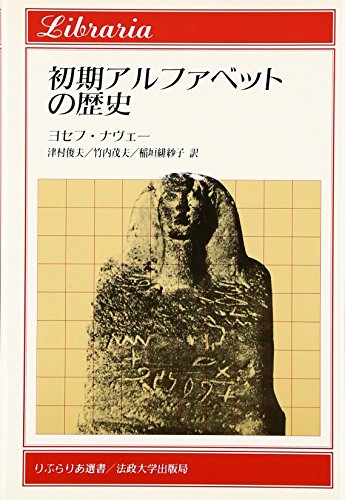5 0 0 0 初期アルファベットの歴史
- 著者
- ヨセフ・ナヴェー著 津村俊夫 竹内茂夫 稲垣緋紗子訳
- 出版者
- 法政大学出版局
- 巻号頁・発行日
- 2000
1 0 0 0 OA ヘブル語聖書における「笛」「フルート」の釈義的考察
- 著者
- 竹内 茂夫
- 出版者
- 一般社団法人 日本オリエント学会
- 雑誌
- オリエント (ISSN:00305219)
- 巻号頁・発行日
- vol.52, no.1, pp.105-118, 2009-09-30 (Released:2014-03-31)
- 参考文献数
- 37
This paper aims to re-examine three Hebrew words in the Hebrew Bible which are usually translated as “flute” or “pipe”. First, ‘ûgāb (attested four times in the Hebrew Bible and once in 11QPsa/11Q5), could in fact refer to a chordophone rather than to an aerophone, since in the Septuagint it is rendered as κιθαρα “lyre, harp” on one occasion, whilst it occurs twice as οργανον “tool” and a further two time as ψαλμος “song (sung to the harp), psalm” In addition, words clearly referring to chordophones such as kinnôr “lyre” or minnîm “stringed instruments” are always found paired with ‘ûgāb. Secondly, nəḥîlôt (attested once) occurs as ’el-hannəḥîlôt with the preposition ’el- “to (ward)” and the definite article haC-. Is is said that its meaning is “difficult” or “uncertain”. Even so, it has been translated as “flute” from the supposed Hebrew root ḥ-l-l like ḥālîl or as “inheritance” from the n-ḥ-l found in the Septuagint. Although the meaning of nəḥîlôt itself remains open to question, ’el-hannəḥîlôt as a whole may refer to the incipit of an unknown tune. Thirdly, ḥālîl (attested five times) is translated as αυλος “double-pipe” in the Septuagint. This meaning is quite plausible as there are archaeological evidence of existence of the double-pipe in the Syria-Palestine area. It is not unlikely that the fairly modest number of attestations of words referring to ‘flute’ or ‘pipe’, (less than 10 in the Hebrew Bible) is due to the fact that such words are easily associated with erotic or intoxicating objects, rather than with musical instruments such as these were known in Egypt and Greece.
- 著者
- 竹内 茂夫
- 出版者
- 一般社団法人 日本オリエント学会
- 雑誌
- オリエント (ISSN:00305219)
- 巻号頁・発行日
- vol.31, no.1, pp.75-86, 1988-09-30 (Released:2010-03-12)
- 参考文献数
- 5
There is in Japanese a phenomenon called kakekotoba, in which a word is a homonym with two different meanings, and which coheres two different contexts by the correspondence of one meaning to each context. This brief paper aims to observe that we can find also in Hebrew a similar phenomenon to Japanese kakekotoba called “Janus parallelism” and to clarify features of Hebrew “Janus parallelism” compared with Japanese kakekotoba.“Janus parallelism” has been studied through the analysis of tricola in Hebrew poetry and it has been held that second colon carries the kakekotoba-like function, i. e. that a homonym in second colon parallels “what precedes it with one meaning, and what follows it with a different meaning.” (Gordon)The greatest difference between Hebrew “Janus parallelism” and Japanese kakekotoba may be that the Janus-word in the second colon semantically corresponds to words of different cola because Hebrew poetry is based on parallelism, and so it coheres to two other cola, while the kakekotoba in Japanese poetry semantically and/or syntactically coheres words immediately before and/or after it. But we should note that such a phenomenon with homonym is seen not only in Japanese but also in Hebrew. “Janus parallelism” is found also in prose and poetry besides the tricolon. “Janus parallelism” in such cases will be discussed in the future.
